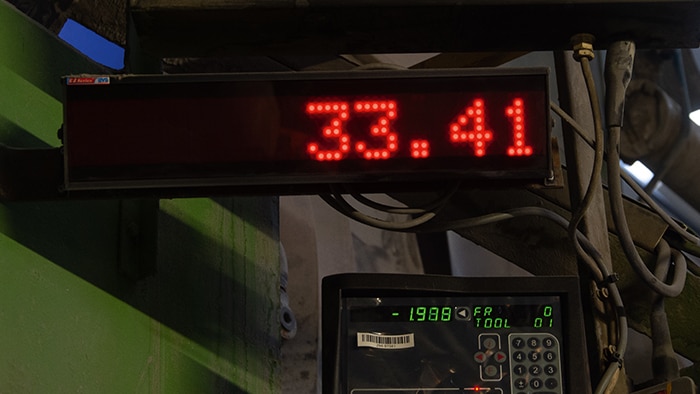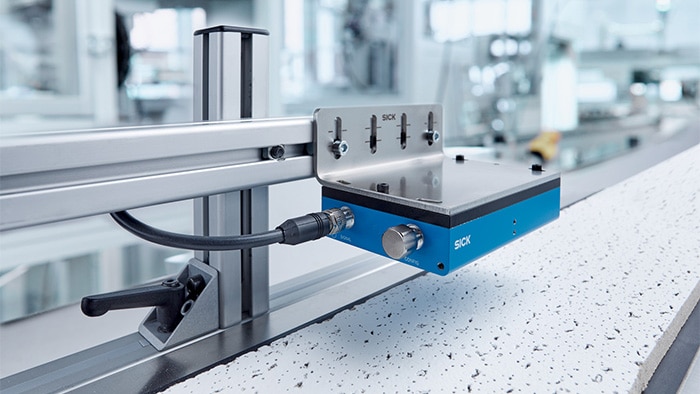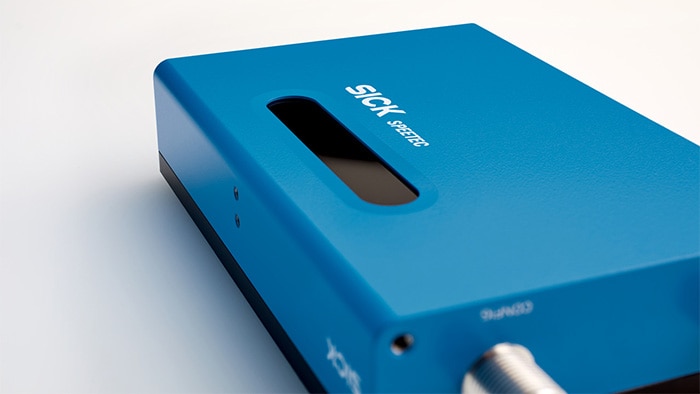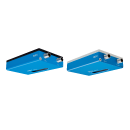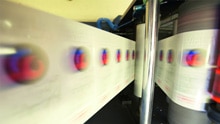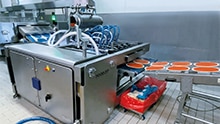There are times when the continuous output of just one accurate, digital measurement can transform a manufacturer’s ability to control a production process. For IKO Roofing, one of the UK’s leading producers of roofing products, digitalizing production speed data using a new laser-based non-contact measurement technology from SICK, solved a daily headache for operating engineers at one of its UK plants, while helping managers thousands of miles away to monitor output, costs and product quality.
Bituminous roofing felt process: digitalization and measuring speed without touching
IKO Roofing is a worldwide company producing roofing, waterproofing and insulation products, operating more than 30 manufacturing plants throughout North America and Europe. As a vertically integrated company, managers at the company’s HQ in Canada, keep a close eye on production efficiency and product quality.
Bituminous roofing felt process
Whether the end product is destined for a skyscraper office-block or a garden shed, producing the roofing felt follows same manufacturing principles: On the 30 metre-long machine, bitumen is applied at 170 ° C to a 1.0-meter-wide carrier base layer, before minerals and other materials are added according to closely guarded recipes in a continuous process. To enable a continuous length of roofing felt to be manufactured, each time a new roll of base layer is needed, it is spliced to the end of the previous roll and an accumulator mechanism is used as a buffer to ensure that the manufacturing process continues at the same speed. In the continuous production process, one measurement is more important than any other: The speed of the line controls how much material is applied and therefore directly corresponds to how closely the final product has kept to the product recipe. The closer this speed remains to the target, known as 100%, the better the product quality.
Close tolerances
But the engineers Appley Bridge had a problem: The digital counter output took its speed measurement from a proximity sensor aligned to a gear mechanism near the beginning of the process. However, line speed data was fed into the company’s PRODAC global MES (Manufacturing Execution System) from an encoder measurement positioned on the winder at the end of the machine. As a result, different sources of speed data were used by UK operators and managers both in the UK and at the company’s HQ in Canada, resulting in seeing readings that regularly showed a discrepancy. An impact was that operators could be chasing an unreachable target to hit the 100% speed and quality target, as they responded to feedback from senior management.
Measuring product speed without touching
“To get an accurate measurement we want to measure the speed of the product, rather than the speed of the machine, which does not take account of product slippage. Using a sensor like a measuring wheel encoder that is in direct contact with the product is problematic for a material like roofing felt, that could be hot or sticky near the beginning of the process and would also be subject to significant wear,” said Engineering Manager Paul Hayward. “We also wanted to move away from measurement devices that have to be integrated into the machine. They can become encrusted in dirt from the process and difficult to access for maintenance or replacement.”
Non-contact laser sensor
The combination of affordability and precision of SICK’s non-contact surface laser sensor SPEETEC was an attractive option for IKO and SICK support staff worked closely with the Wigan engineering team to install the product.
The SPEETEC’s rugged aluminum housing measures just 140 mm x 95 mm x 32.5 mm and is ideal for the operating conditions at the Wigan plant. The SPEETEC was set up and integrated directly into the machine’s Allen Bradley PLC, without any additional electronic device being necessary to process the signal output. The measurement is automatically converted on board the sensor into TTL/HTL signals identical to those of an incremental encoder, so that they can be easily integrated into the machine control system.
The SPEETEC’s digital output was integrated with both the visual speed counter and IKO’s PRODAC MES system, where it is used to output measurements on the production floor, as well as being accessed remotely by the international management team.
“The SICK support engineers were extremely helpful in providing back-up and technical help to install the product,” Hayward continues. “Although the SPEETEC sensor may be quite sophisticated, the actual output isn’t complicated. It’s doing the clever stuff within the sensor and we are getting simple information out of it.
Consistent data output
Darren Pratt, SICK’s UK product manager for motion control sensors, comments: “The IKO Roofing team at Wigan is one of the first building materials manufacturers in the UK to benefit from the effectiveness of the SPEETEC non-contact measurement principle. Like many of our customers, they have been pleasantly surprised by the affordability of the product, and how easy it is to integrate and use with their existing machine set-up. Typically, return on investment for a SPEETEC can be achieved in under 12 months.
“Now at our daily engineering meetings, and in our communications with the IKO HQ, we can be confident of accurate digital data. The SPEETEC is quietly getting on with its job, it’s showing 100% and everything is normal. It’s literally a question of no news is good news!”
Read more
Permanent control of continuous webs - so nothing goes wrong
I want to stay up to date and regularly be informed about new articles!

